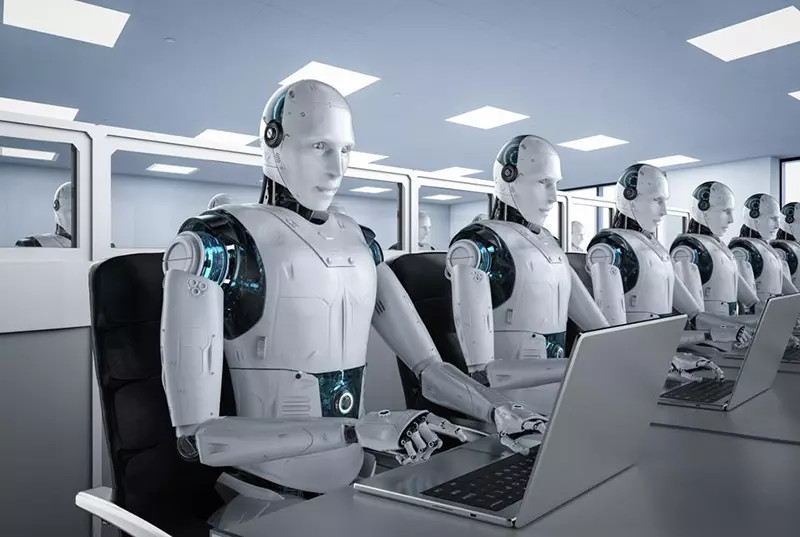
FPT President Truong Gia Binh said that chatbots helped a lot in the pandemic’s peak days in June and July 2021 in Bac Giang province. Chatbots carried out 120,000 calls to find and screen patients. It would take medical staff 60 days to implement the same number of calls.
Nguyen Huu Hung Cuong from FPT Digital related a story to show the role of AI technology in the consumer finance sector. The customer care center of a consumer finance company in Vietnam, present in 46 cities/provinces, was overloaded, which affected customers’ experiences.
The solution to the problem was using a chatbot to take care of customers. The company communicates with customers through an omnichannel, and provides data and data analysis in a timely way.
This has helped increase productivity by 60 percent. At present, its system has had 1.3 million customer interactions and handles nearly 3 million messages. The customers’ satisfaction level has improved considerably and 73 percent of operations can be settled automatically thanks to automation technologies.
Cuing said the retail industry has witnessed considerable improvement thanks to the application of high technologies. It has a very clear digital transformation roadmap, using chatbots to satisfy customers, and create an omnichannel approach to customers.
The solutions have brought clear results. The revenue in the first nine months of 2021 rose by 31 percent compared with the same period in 2020, while revenue from online sales increased by 10 percent, which accounted for one-third of total revenue of enterprises. The time that customers need to wait for drugs at pharmacies has fallen by 80 percent.
AI is used to for a super-automation process, helping to automate more than 300 operational processes in the banking sector. The product has been applied at 15 percent of banks in Vietnam, which helps save 300,000 working hours each year.
In recruitment, technological solutions allow businesses and candidates to attend competitions and implement interviews anytime and anywhere, with no travel required.
Only an internet connection is needed for employers and candidates to organize interviews with the support of a Bot AI. Also, employers can quickly assess and recruit personnel thanks to data storage systems.
The AI platform and supporting features such as image analysis, biometrics and personality tests make suggestions and help employers find suitable candidates, while saving costs and resources. Enterprises can employ hundreds of workers at the same time, and there is no need to organize job days.
Vo Cong Quoc Quang, a consultancy expert in digital transformation, said that chatbots now can give accurate and high-quality answers, can learn and regularly update information, have smooth voices and have emotion-recognition features. Chatbots have helped enterprises increase operational performance by 70 percent with high quality and stability.
New trends
Marcin Miller from McKinsey Vietnam said new tendencies are taking shape after Covid-19. The workforce has changed. Many occupations have been affected around the world. Workers need new skills to adapt to the new circumstances. Also, working from a distance, e-commerce, digital transactions, automation and AI have been applied widely.
This occurred 5-7 years faster compared to a period with no Covid-19. The tendencies are expected to continue to take place. People will continue working from home, organize meetings via internet and will travel less. Meanwhile, digital transactions and e-commerce are becoming more and more popular. AI and automation will be applied regularly to improve operational efficiency.
In developed economies, 20-25 percent of workers work from a distance for 3-4 days of the week. In Vietnam, the figure is lower. E-commerce has been growing rapidly in many countries. In the UK, for example, it accounts for one-fourth of total transactions.
“We have conducted a survey on 800 enterprises and most of them say they have invested in automation,” Miller said.
Nguyen Tuan Hong Phuc from KPMG Vietnam, said businesses have to make important choices, either to change themselves to fit the new circumstances, or see a decline in business if their rivals move towards the digital world more rapidly.
Meanwhile, supply chains need to find other ways and companies need to offer new products, and be more creative and customized to fit customer requirements.
Analysts say before the Covid-19 pandemic, many companies tried technologies but did not know how to operate the technologies. But now, with experience, they can apply technologies to improve their business performance. VA, self-propelled vehicles and drones, for example, are now being used all over the world.
Duy Anh